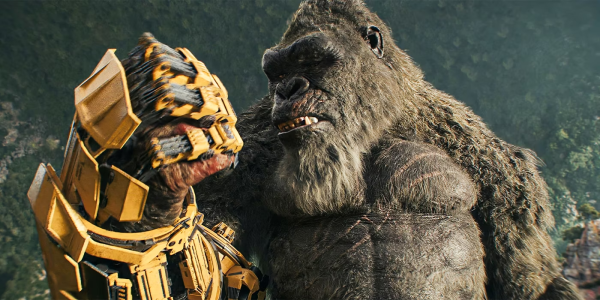Sonic the Hedgehog: From Green Hill Zone to Green Hill’s Own
Your first kiss.
Learning of the death of a loved one.
Receiving your college admission letter.
There are some moments that will never leave us no matter how hard we try to forget them. These moments come infrequently. But when they arrive, they stay with us forever.
On April 30, 2019, Paramount released their first trailer for “Sonic the Hedgehog.” Sonic’s visual design was hyped and highly-anticipated by fans. We all wanted one thing: Sonic, unfiltered and overconfident, ready to show us how fast the Blue Blur could go.
No one saw the real Sonic that day. No, we got something much worse. We had to live through one of those moments we would never forget.
On April 30, millions of Sonic fans were mortified to find that Paramount, in all of their corporate wisdom, had turned the beloved blue cartoon hedgehog into a hellish reptilian cryptid that hardly resemble anything made for kids.
Fans didn’t buy it. The poor reception on social media and the nearly 720,000 dislikes on the trailer convinced Paramount to scrap Sonic’s design entirely and hire a new visual effects team. The Moving Picture Company Vancouver––the same studio behind “Life of Pi” and “The Lion King (2019)”––worked 17-hour days to give Sonic a more faithful and less harrowing design. After post-production wrapped, MPC Vancouver was dissolved and all its workers laid off, despite salvaging the wreckage of a billion-dollar franchise.
To call the production of the Sonic movie troubled is an understatement. Now, almost a full year after the film’s first trailer, we have a clean, recognizable “Sonic the Hedgehog” that parents can feel safe showing their kids. Is it any good?
Really, it’s not half bad. However, if you were hoping for a traditional Sonic story with no external moral quandaries, you won’t find it here.
After being forced from his home world of Green Hill Zone, Sonic the Hedgehog (Ben Schwartz) eventually ends up in small town Green Hills, Montana, where he secretly spies on the local sheriff, Tom “Donut Lord” Wachowski (James Marsden).
While lamenting his loneliness one night, Sonic accidentally runs too fast and creates an electromagnetic pulse that shuts down Green Hills and draws the attention of the American military. As you might expect, hilarity ensues as Sonic teams up with Tom to face the evil Dr. Robotnik (Jim Carrey), who wants to use Sonic’s powers to enhance his futuristic technology.
The premise, while simple and silly, works. Sonic feels like a natural inclusion to our world, especially when he gets in his feelings alone or with Tom. Not everything is so meaningful, however; it’s hard to buy into the film’s world when Sonic does the floss or when a character parrots an ad for Olive Garden.
Characters’ motives and backstories are never fully fleshed out, and when they are fleshed out, they come across as silly and undercooked (Sonic, for seemingly no reason, has an owl for a mother). Luckily, the performances are more than good. Schwartz creates an authentic adaptation of Sonic’s kiddish persona, and when it comes to pretending to talk to CGI animals, James Marsden is one of the best in the business (he recently starred in a similar role for “Hop”).
Sonic may be cute and fun, but the real star of the film is Jim Carrey’s Dr. Robotnik. Carrey channels the same manic gusto from his roles in “The Mask” and “Ace Ventura” into the world of Sonic, making his performance the most memorable and cartoonish in a film where the main character is a literal cartoon hedgehog. Some scenes feel tailor-made for Carrey’s performance, and it’s easy to imagine how forgettable the film would be without him lending his A-list talent.
While “Sonic the Hedgehog” weaves a believable premise and sports great performances, it’s hard to fully enjoy a film with so much ethical baggage behind its production. Knowing that the visual effects team worked so hard just to be laid off before the film could release should leave a bad taste in anyone’s mouth. However, if you can stomach the mistreatment of industry-standard animators, you’ll discover a good movie adaptation of a video game. And those aren’t easy to come by.
Your donation will support the student journalists of Saint Louis University. Your contribution will help us cover our annual website hosting costs.










